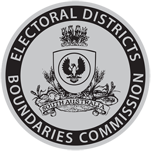Members of the public are able to make suggestions and comment on redistribution matters to the Electoral Districts Boundaries Commission (EDBC) in the early stages of the proceedings. Hearings may be arranged in country and metropolitan areas so that all sectors of the population have an opportunity to present evidence which they think is relevant.
A number of federal and State government agencies provide expertise and information on such issues as demographic trends, housing statistics and planned developments. In particular, the EDBC receives advice and population projections from the State’s demographers and the Australian Bureau of Statistics (ABS).
Since 1998, the EDBC has used computer mapping technology to facilitate the drawing of district boundaries. Prior to working with a Geographic Information System, the EDBC had typically undertaken the task using printed maps, in conjunction with hardcopy election data and demographic information. The current system contains spatial data representing federal, state and local government electoral boundaries, suburb, township and section/hundred boundaries and also contains the boundaries used by the ABS for the release of census information. This data allows for the graphical reproduction of boundaries and the production of detailed maps.
The EDBC is formally notified of State election results in each district.

